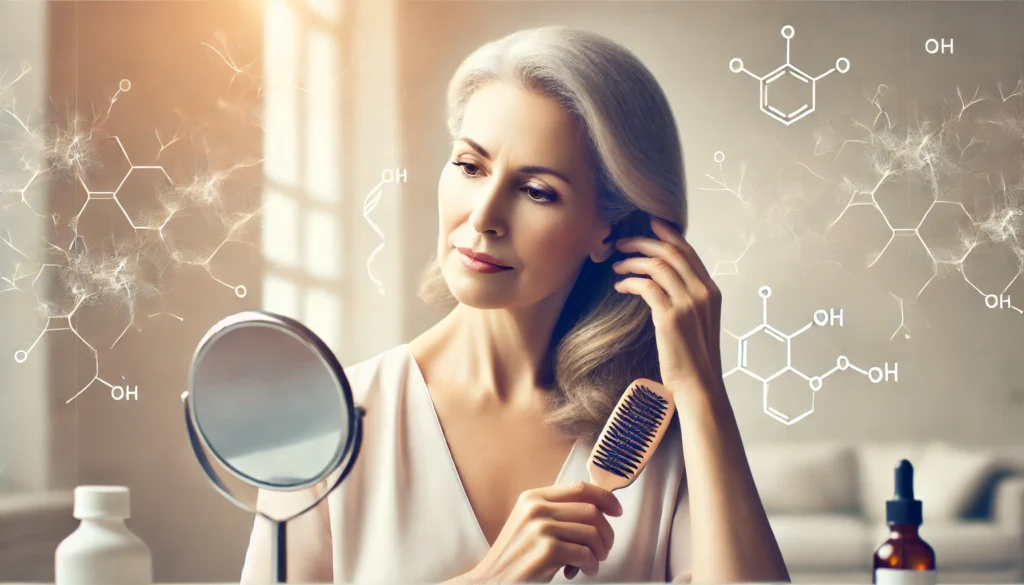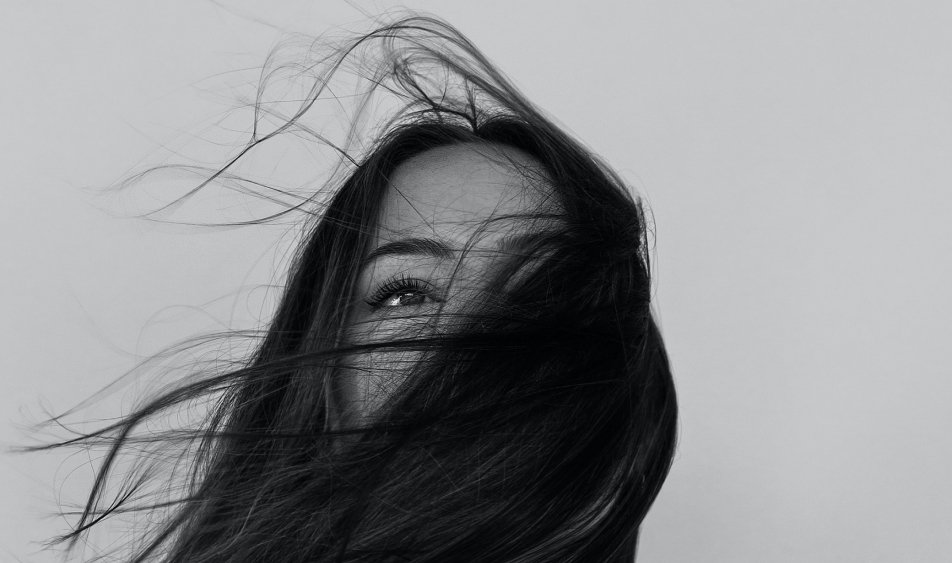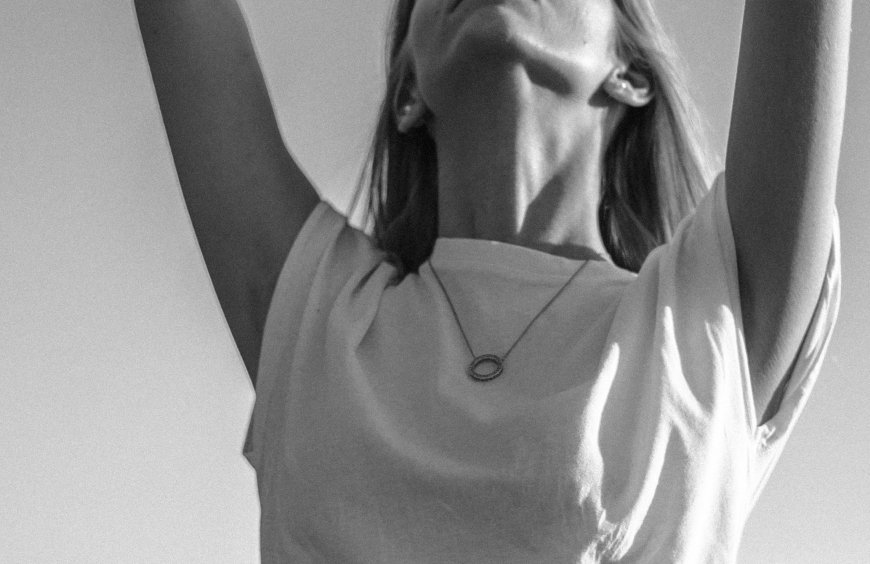
Hair thinning, hair shedding, and changes in hair texture can be one of the most unexpected and distressing symptoms for women moving through menopause. While we expect symptoms like hot flashes and sleep disruptions, noticing more hair in the shower drain can feel unpleasant. But here’s the good news: while menopausal hair loss is common, it’s not permanent for most people and can be managed with the right treatments and lifestyle adjustments.
This blog will explain how menopause affects your hair. It will also explain the different types of hair loss associated with this stage, and actionable steps to regain fuller, healthier locks.
Menopause and Hair Impact
How Menopause Causes Hair Loss
Menopause occurs due to significant hormonal shifts in a woman’s body that typically start during perimenopause (the transition phase leading to menopause). The most vital hormonal changes include decreasing estrogen and progesterone levels, coupled with a relative increase in androgens (male hormones like testosterone).
Here’s how these hormones affect your hair:
-
Estrogen and Progesterone are known to keep hair in the growth (anagen) phase longer, giving it a thicker and healthier appearance. The decrease in these hormones shortens the growth phase, making hair finer and more prone to shedding.
-
Androgens can shrink hair follicles, leading to thinning or hair loss, particularly on the crown and temples.
Additionally, menopause-related stress can increase cortisol levels, further disrupting the hair growth cycle and worsening hair shedding.
Stages of Menopause Affecting Hair
-
Perimenopause: Hormonal fluctuations begin; temporary hair loss, known as Telogen Effluvium, becomes more noticeable.
-
Menopause: Significant hormonal decline, often leading to sustained hair thinning or Female Pattern Hair Loss at the crown.
-
Postmenopause: Hair loss may stabilize, though regrowth may be slower without treatment.
Understanding these stages can help you pinpoint when and why hair loss is occurring.
Types of Menopause Hair Loss
Menopause-related hair loss typically takes the following forms:
-
Telogen Effluvium (TE) – This is a sudden, widespread hair loss across the scalp often triggered by hormonal stress or changes. The good news? It’s temporary and resolves with proper treatment and care.
-
Female Pattern Hair Loss (Androgenetic Alopecia) – A more gradual thinning at the crown, widening part lines, or a receding hairline. This type often requires medical intervention like Minoxidil or hormone therapy to reverse or mitigate.
Other Contributing Factors
Menopause doesn’t act alone. Other conditions can worsen hair loss during this transition:
-
Genetics – A family history of Female Pattern Baldness increases susceptibility.
-
Nutritional Deficiencies – Lack of essential nutrients like iron, Vitamin D, zinc, or Omega-3s weakens hair.
-
Thyroid Dysfunction – A condition like hypothyroidism may accompany menopause and impact hair growth cycles.
-
Medications – Hormone therapy, blood pressure meds, and antidepressants may promote temporary shedding.
If you suspect any of these underlying conditions, consult a healthcare provider for targeted treatments.
Recognizing Signs of Menopausal Hair Loss
Hair loss during menopause doesn’t happen overnight. Be on the lookout for these symptoms:
-
Increased hair shedding on pillows, in the shower, or during brushing.
-
Thinning at the crown or a wider hair part.
-
Weak, brittle strands that break easily.
-
Overall loss of hair volume and density.
-
A receding hairline or bald patches.
The sooner you recognize these signs, the quicker you can act to minimize further loss.
Treatment Options for Menopause Hair Loss
Thankfully, menopausal hair loss can be managed effectively with a combination of medical treatments, lifestyle changes, and natural remedies.
Over-the-Counter Treatments
-
Minoxidil (Rogaine) – FDA-approved for female hair loss, this topical treatment stimulates follicles, promoting regrowth. Continuous use is needed for lasting results.
Medical Interventions
-
Hormone Replacement Therapy (HRT) – Helps balance estrogen and progesterone levels, reducing hormonal hair loss.
-
Spironolactone – An anti-androgen prescription that blocks testosterone’s effects on hair follicles.
-
Platelet-Rich Plasma (PRP) Therapy – Injected platelets stimulate scalp follicles and enhance hair density.
Supplements for Hair Growth
-
Biotin and Collagen – Support keratin production, which strengthens hair.
-
Omega-3 Fatty Acids – Found in fish oil, they reduce inflammation and keep the scalp healthy.
-
Vitamin D and Iron – Address nutrient deficiencies critical for hair growth.
Lifestyle and Hair Care Adjustments
-
Diet – Incorporate proteins (eggs, nuts, salmon), leafy greens, and whole grains.
-
Gentle Hair Care – Use sulfate-free shampoos and avoid excessive heat styling.
-
Stress Management – Yoga, meditation, and breathing exercises can lower cortisol levels.
-
Scalp Massages – Enhance blood flow to the scalp with essential oils like rosemary and peppermint.
Natural Remedies to Try
For those seeking holistic approaches:
-
Onion Juice – Rich in sulfur, it strengthens follicles (though the smell can be a dealbreaker!).
-
Saw Palmetto – A natural DHT blocker that may reduce thinning.
Significant hair loss or bald spots deserves medical attention. Consult a dermatologist or trichologist to identify any underlying conditions contributing to hair loss. They can perform comprehensive scalp analyses, blood tests, and recommend personalized treatment plans based on your needs.
Reclaiming Your Confidence
Hair loss during menopause is a common and manageable challenge, but the emotional toll shouldn’t be underestimated. A proactive approach combining treatments, healthy habits, and professional advice can make a world of difference.
Looking for expert-approved advice and product recommendations? Explore proven solutions for menopausal hair loss or book a consultation with a professional. Fuller hair is within your reach.







